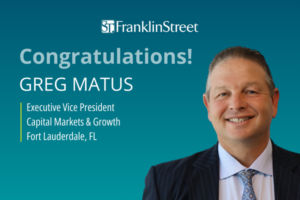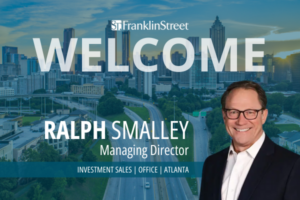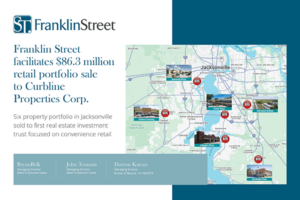TIAA-CREF, the Fortune 100 financial services firm with $869 billion in assets under management for teachers, has South Florida in focus.
Deep-pocketed, focused, aggressive and in the market for deals in the $100 million range, it set its sights on flourishing communities like Coral Gables, Miami’s Brickell district, Miami Beach, Fort Lauderdale and western Miami-Dade County.
“We’ve been looking at everything that’s come to market,” Michael Fisk, TIAA-CREF senior director of acquisitions for the Southeast region, told the Daily Business Review. “We’re definitely very interested.”
In July, the firm acted on that interest by claiming Broward County’s largest deal so far this year with a $149 million outlay for the Related Group’s Manor at Flagler Village apartments, just three months after cinching a nearly $90 million multifamily asset purchase in Coconut Creek.
Enticed by population growth, rising rents, land scarcity in major submarkets, billions of dollars invested in regional transportation infrastructure and nearly 80,000 new jobs, power players like TIAA-CREF have honed in on South Florida.
So far this year through Aug. 5, TIAA-CREF and other buyers behind the region’s 30 largest transactions injected $3.4 billion into South Florida, including about $1.7 billion for Miami-Dade’s top 10 deals, $1.05 billion for Palm Beach County and nearly $674 million in Broward, data from Washington-based research firm CoStar Realty Information Inc. showed.
In May, New York-based real estate investment manager Clarion Partners LLC paid north of $278 million for Palm Beach Outlets, beating out international conglomerate AEW Capital Management LP’s $246 million purchase of the Phillips Point office complex for this year’s most expansive real estate trade in Palm Beach County.
Further south, Ashkenazy Acquisition Corp., a New York-based investor with a $7 billion real estate portfolio, invested $196 million for a 49 percent stake in a landmark Miami retail center. Ashkenazy paid Chicago mall operator General Growth Properties Inc. $1,874 per square foot for the minority share in tourist-rich Bayside Marketplace, a 217,523-square-foot waterfront shopping center in downtown Miami.
“There’s so much equity chasing deals today,” said Gregory Matus, regional managing partner for South Florida at real estate brokerage house Franklin Street. “You’re going to see institutional buyers continue to be aggressive because capital is cheap. They’re aggressive to get theirs out, otherwise it stays stagnant, sitting on their balance sheets.”
For TIAA-CREF, the timing’s also right to add newer product to a large, valuable – but mostly aging – South Florida portfolio.
In the heart of Miami’s financial district, the group owns the 32-story office tower at 701 Brickell Ave., a solid asset but one built in 1986. Its 801 Brickell tower is just as enviably located but even older, dating back to 1984.
That’s why the firm has been bullish in recent years, scooping up large luxury multifamily developments, like the Villages of Merrick Park in Coral Gables, to update a portfolio where assets typically run in the 15-year age bracket. Now, the company’s in the market for office, retail, industrial and multifamily properties in South Florida and other international gateway markets like Boston and Washington.
“We looked at the historic performance, and what we found is Miami and Fort Lauderdale have performed very well,” Fisk said.
Hotels Are Hot
That strong performance is especially evident in the hospitality sector, driving interest among big spenders looking to acquire premium product.
“Occupancy rates for South Florida hotels are off the chart,” said Craig Studnicky, principal of International Sales Group LLC. “It’s been very robust and the hoteliers are loving it.”
With yearlong occupancy in the 75 percent to 80 percent range for prime properties, national investors took a tangible interest that spurred the region’s biggest deal.
In a $325 million trade, New York-based Carey Watermark Investors Inc. made a nine-figure outlay for the Ritz-Carlton Key Biscayne in what was by far the largest single transaction of the year.
To acquire the 302-room condo hotel, Carey Watermark Investors shelled out nearly $1.1 million per key, or about $840 per square foot, in a debt assumption and recapitalization deal with a 5.2 percent cap rate with seller Gencom Group, the hotel’s developer. In exchange, it and affiliate Carey Watermark Investors 2 Inc. gained control of 60 percent of the asset after Gencom Group recapitalized in June.
The buyers financed the acquisition by assuming a collateralized mortgage-backed securities loan with a balance in the $160 million range, and they plan additional investments to renovate all guest rooms and condo-hotel units, according to CoStar.
It was one of two luxury hotel deals so far this year for Carey Watermark, which paid $45 million in June to transfer partial interest in Fort Lauderdale’s Ritz-Carlton in a debt assumption deal with Invesco.
That transaction was one of six major hotel sales rounding off the top 30 deals across South Florida. Making the list of top investors were Chesapeake Lodging Trust, which paid $278 million for the oceanfront James Royal Palm hotel in Miami Beach; Abu Dhabi Investment Authority for its $230 million deal with Marriott International Inc. for Edition Miami Beach; and Noble Investment Group, which acquired downtown Fort Lauderdale’s $48.1 million Renaissance Hotel from Westbrook Partners.
“The sector’s unbelievably strong,” Studnicky said. “What it tells you is there is a shortage of hotels rooms, and that’s attracting institutional money.”
Multifamily
Across South Florida, institutional capital has had a long and diverse reach leading to dozens of high-value trades. Especially popular are multifamily developments, a product accounting for 60 percent of the 10 biggest trades in Miami-Dade and 40 percent of Palm Beach’s largest transactions, for a $987 million outlay on 12 deals across the region.
One buyer, Atlanta-based Carroll Organization, spent $112 million for control of 812 West Palm Beach apartments as part of a national acquisition pipeline with six deals worth a combined $250 million. “Multifamily assets continue to be an extremely attractive investment relative to other assets, and the influx of new capital seeking access to the asset class supports this fact,” Carroll Organization CEO Patrick Carroll said on the firm’s website.
Driven by rising rents and a market requiring fewer concessions to tenants, investors are willing to become landlords in a marked shift from the last real estate boom when South Florida became one of a few markets to experience reduced inventory as developers converted apartments to condos.
In Miami-Dade, for instance, average effective rent for 2015 is about $1,331 per month—a 6.5 percent gain in a year, according to Marcus & Millichap’s apartment market report. Broward prices saw similar spikes, climbing 6.2 percent to $1,401. The smallest increase at 4.5 percent pushed average Palm Beach rents to $1,381.
“The institutional owners are leading the way on this particular go-round on multifamily,” said Patricia Nooney, senior managing director of CBRE Inc.’s investor services group in Florida. “In the last cycle, condo converters dominated.”
Depends On The Fed
That’s good news for South Florida, a market tracked by TIAA-CREF and other power players as one of the nation’s top performers. As accredited institutional investors and real estate investment trusts continue to lock in long-term debt, they’re likely to continue brisk trade across the region.
But the next big question is how much longer their spending will last, especially with emerging national and international financial sector policies that could signal a countdown against massive transactions.
In August before the China stock rout, a Reuters poll of U.S. economists predicted the Federal Reserve would likely start raising interest rates within weeks. Economists surveyed expected two hikes this year—one as early as this month and another by year-end.
Higher rates would make capital more expensive and likely taper the flow of institutional money, putting a damper on big deals.
One likely scenario: a flood of properties hitting the market in the next 18 months.
“Everybody’s who’s not committed to the market will look to capitalize,” said Matus, former head of Marcus & Millichap’s national retail and multi-housing groups. “Part of that is we’re heading towards the backside of the cycle. If you want to sell, you want to do so before interest rates go up and while there’s still tremendous capital for deals.”
But some observers say a hike in interest rates could be good news for a region heavily reliant on international buyers.
“Latin Americans still have a love affair with South Florida, but prices have been prohibitive,” said Studnicky, former president of the Related Group Inc., one of Florida’s most powerful development firms. “Right now the temperature among temperature among the major developers is, ‘Let’s back off and wait for the dollar to soften again.’ “
‘Middle Inning’
For South Florida companies like Mckafka Development Group, the key issue is frenzied price hikes. As each sale fuels asking rates for neighboring lots and spills into broader markets, developers say big-money deals could cripple plans for new product.
“You know how this works,” Mckafka CEO Fernando Levy-Hara said. “Landowners at this stage of the cycle feel that everything is much more valuable than it is.”
Mckafka is the developer behind Fort Lauderdale’s Las Olas by the River, Village East condominiums and a 90-apartment venture minutes away from Miami International Airport. But its latest projects, like Le Serene, are rising outside South Florida in Tampa, St. Petersburg and other cities overlooked by developers in the early stages of the economic recovery.
In Sarasota, where Mckafka is at work on an apartment complex called Le Serene, the developer scooped up six acres at a price equivalent to $26 to $28 per saleable square foot—numbers not seen in Miami since the recession. Even during the downturn, it needed $26 per saleable square foot to acquire the note and pluck out of foreclosure the site it purchased in Miami to build its Crimson condos. Today, other land deals in Miami’s Edgewater neighborhood run from $70 to $100 per saleable square foot. Factor in risk, marketing, construction and other development costs, these prices would now be unfeasible for a project like Crimson, currently selling at $600 per square foot.
“Seven blocks to the west you can barely sell at $350 or $400,” Levy-Hara said. “Of course condo prices went up, but not enough to cover the difference. We’re always looking to do these kinds of projects here, but now we cannot find the land to support this kind of business plan.” Analysts say it’s a sign that South Florida has cycled past the recession of 2007, entered a recovery stage and is now exiting the expansion phase where developers can count on profitable projects.
“There’s more liquidity in Miami today than we’ve probably ever seen,” said Jeffrey Morris, managing director of JLL’s Florida capital markets division and one of the brokers behind Tishman Speyer’s nearly $146 million sale last year of the Courvoisier Centre office complex in Miami’s Brickell Key. “I don’t think we’re near the end of the cycle. We’re in the middle inning. We’ve got another two to three years of this.”
Evolving Market
The big challenge now will be how the region handles its traditional, inevitable next stage—oversupply—to strike a balance between demand and rising costs.
On the one hand, this new cycle created built-in safeguards to eliminate pre-recession lending practices that contributed to wild overfunding as lenders fully financed projects or provided developers with up to 90 percent of construction costs.
Burned by the housing collapse, traditional lenders tightened the reins, offering only up to 30 percent financing and insisting developers dig into their own coffers to buy a stake in new projects.
The result: A shift to a model widely used in Latin American but new to the U.S., requiring buyers to put down deposits of at least 50 percent on preconstruction projects. Under the new model, lenders and buyers now finance about 80 percent of new buildings, leaving developers to cover the remaining 20 percent of costs.
“There were several ingredients that made the last market crazy. None of them exist now,” Levy-Hara said. “This market will correct itself, and we won’t see a huge amount of over-construction. Without the down payments and the ability to meet lenders’ requirements, a lot of people buying land now won’t be able to start their projects until the next cycle. That’s much healthier than what happened in 2006. We shouldn’t see a dramatic end to this. It will be a smooth landing.” New controls and economic realities may be most apparent in the office sector, which has been largely overlooked in the post-recession market as developers turned to buyer financing to fund construction.
In the first sign of new life, CBRE Inc.’s global research arm projects a 998,000 square feet office construction pipeline by 2017 for Miami-Dade, which has had no new major projects in the last five years. New Class A options are set for Brickell, Aventura, Coral Gables, Doral and downtown Miami.
Some key downtown Miami properties, like the Wells Fargo Center, continue to struggle with low occupancy, raising questions about whether office supply already outpaces demand.
Real estate executives, like CBRE senior vice president Shay Pope, say the construction push is a sign that developers are looking ahead and banking on rising demand for premium offices as white-collar employment rates improve.
Some developers, like Swire, are already reaping the benefits, rapidly leasing its Brickell City Centre office space during construction to high-value tenants like the Akerman law firm.
On the investment side, trading is still slow as buyers remain cautious. Only four of the region’s top 30 deals involved office projects. In Miami-Dade, Alliance RE Holdings LLC acquired Brickell Office Plaza from CBRE Global Investors Ltd. in a $140 million deal, and RREEF Property Trust Inc. paid Guggenheim Investments $111.6 million for the tower at 800 Brickell Ave.
Palm Beach County saw only two major office trades: Colonnade Properties LLC’s Phillips Point sale and KBS Realty Advisors’ $63.1 million deal with J.P. Morgan Investment Management Inc. for the Financial Center at the Gardens.
None of Broward’s biggest deals were for office centers.
With multifamily and hotels remaining top prospects for deep-pocketed buyers like TIAA-CREF, the deals are likely to keep rolling in for South Florida commercial real estate.
Strong demand drivers, like one of the fastest-growing populations in the U.S., coupled with increasing competition and barriers to entry for new players, make the region an appealing investment hotspot.
“It’s a very attractive market for a lot of reasons,” Fisk said. “It continues to evolve and get better.”



